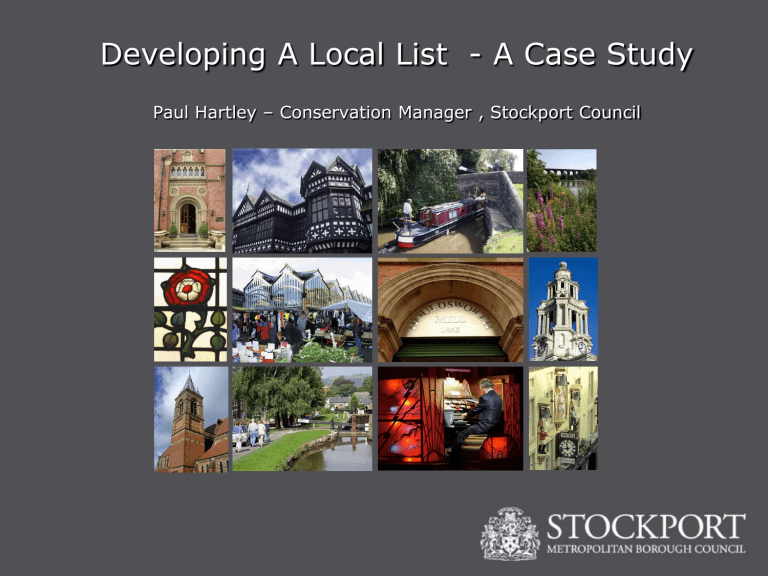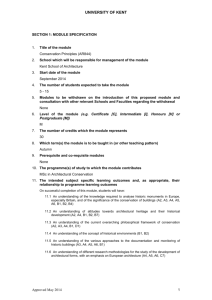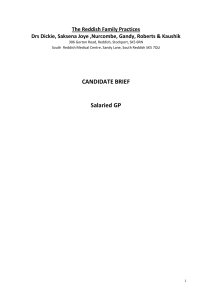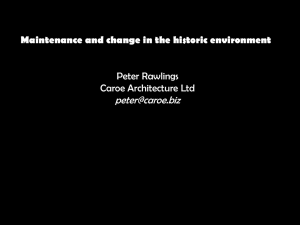Developing A Local List - Blackpool Borough Council

Developing A Local List - A Case Study
Paul Hartley – Conservation Manager , Stockport Council
• Stockport – location
Stockport
• ‘one of the darkest and smokiest holes in the whole industrial area’ (Frederick Engels, 1840s):
• ‘When the world was made the rubbish was sent to Stockport’ (Lady Shackerley, 1871)
• ‘…setting of the town compares to the finest landscape of Classical Greece..’ (early C18 th rector of Stockport)
• ‘A city of balance, proportion and harmony’
(Barker, 1927)
STOCKPORT UNITARY DEVELOPMENT PLAN 1998
HC2.5 DEVELOPMENT AFFECTING BUILDINGS OF LOCAL INTEREST
Development proposals affecting buildings or groups of buildings of local historic, architectural or other special character interest will not be permitted unless:
(i) the proposal safeguards the character of the existing building(s) in its
(their) setting; or
(ii) there would be no ensuing loss to the visual character and amenity value of the site and no detriment to the visual quality, setting and interest of the local area.
There will be a presumption against demolition and redevelopment unless the proposals meet the requirements of item (ii) of this policy and would result in no net environmental loss.
Conservation & Heritage
Strategy
Key themes :
• review of heritage assets
• positive action
• promoting best practice
• partnership working
Conservation and Heritage Strategy
• Review of Heritage Assets :
Statutory list
Local List
Conservation Areas (Appraisals & Management Plans)
Sites and Monuments Register/Historic Environment Record
• Historic Landscape Characterisation
• Digitisation and public access
Brief
The review is to be carried out in accordance with established
DCMS/EH statutory listing criteria.
Local listable buildings are to be identified in accordance with the following criteria :
architectural interest: buildings which are locally or regionally important for the interest of their architectural design, decoration and craftsmanship; also important examples of particular building types and techniques, and significant plan forms
historic interest: buildings which illustrate important aspects of local or regional social, economic, cultural or military history
close historical association with local or regional important people or events
group value, especially where buildings comprise an important architectural or historic unity or are a fine example of planning (such as squares, terraces and model villages)
Sample survey sheet
Post survey process :
• Digitisation
• Internal consultation
• Area Committee consultation
• Public/community group consultation
• Owner/occupier consultation
• Executive member decision
• Owner Notification
• Publicity/dissemination
Stockport Historic Environment Database
• Hatting
Themes
• Other industries
• Schools
• Schools
• Places of worship
• Public Houses
• Associations
• Cinemas
• Housing
• C20th buildings and structures
• Street furniture
• Survey has helped to inform CA appraisals and target potential new CAs
• Positive dialogue with community groups
• Buildings at risk survey extended to include local list
• Ongoing development of the local list – different approaches eg Marple survey and consultation completed with community input, Cheadle surveyed in-house
Planning process
• Flags significance of building at early point in process
• Provides an opportunity to ensure options are considered
• Mixed success….however very effective where alterations are proposed or impact of new development upon setting
• LDF policies revised & strengthened to protect local heritage assets
Summary / conclusions
• Use of consultants – advantages/disadvantages
• Key importance of consultation/engagement at the right time – developing a positive dialogue
• Can take a long time – selective geographical coverage advisable
• Conservation Strategy – key to getting political support / momentum
www.stockport.gov.uk/historicareas
Paul Hartley – Conservation Manager , Stockport Council Tel 0161 474 4563











